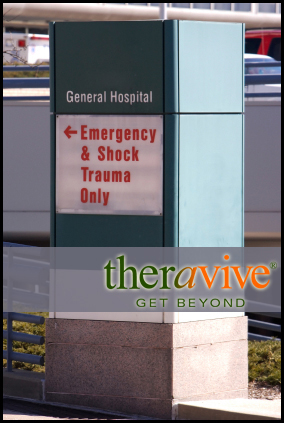 June is PTSD (Post Traumatic Stress Disorder) awareness month. This year we are joining the National Center for PTSD to raise awareness. The National Center for PTSD is part of the Veteran’s Affairs Administration (VA). As such, they support agencies and organizations who provide services to veterans with PTSD.
June is PTSD (Post Traumatic Stress Disorder) awareness month. This year we are joining the National Center for PTSD to raise awareness. The National Center for PTSD is part of the Veteran’s Affairs Administration (VA). As such, they support agencies and organizations who provide services to veterans with PTSD.
What is PTSD?
(PTSD) is a reaction to a traumatic event. PTSD was previously classified as an anxiety disorder. However, in the DSM-V it is classified as a Trauma and Stressor-Related Disorder. Those who have PTSD exhibit a stress reaction to both the initial event and later reminders of the traumatic event, called triggers. A traumatic event may involve direct exposure or witnessing a traumatic event, such as war, violence, abuse or any other event that a person finds traumatic.
In addition to the horror of the initial trauma, people with PTSD re-live the emotions associated with the event when reminded of it, consciously or unconsciously. A trigger can be a sight, smell, sound, taste or feeling. Triggers often seem disconnected to the event, so it may take a while to determine what triggers the reaction.
You may remember an episode of West Wing where one of the president’s top advisors (Josh) was present when the president was shot. He developed PTSD, and had an episode later at a holiday party when a quartet with a cello player (Yo-Yo Ma) triggered a memory associated with the trauma. Josh later worked through this situation with his therapist and was able to recall someone playing a cello in the distance when the shooting occurred. That vague association, seemingly unrelated to the trauma, was paired with the traumatic memory of the shooting in Josh’s brain. As such, the cello music triggered an emotional reaction that was inappropriate for the current situation.
Triggers may be obvious, or in the case of the cello music, seemingly disconnected. The most common example of this is when a war vet hears a loud noise, such as a car backfiring, and begins to experience the same reactions as being in combat. While many veterans have PTSD, some do not. Likewise, we do not know why some abused children or rape victims experience their abuse as traumas, and others do not. The field of Neuropsychology holds promise for helping us better understand trauma. The current belief is that memories are paired together at the time of the trauma, such as the smell of cologne, sound of certain music or a specific color, and one memory triggers the other, resulting in a stress or anxiety reaction.
According to the DSM-V, the symptoms of PTSD are:
· Intrusion – nightmares; recurrent, intrusive memories; flashbacks; intense or prolonged distress after exposed to triggers; or marked physiologic reactivity after exposure.
· Avoidance – avoidance of trauma-related thoughts and/or feelings or external reminders.
· Negative changes in mood or thinking – inability to recall certain aspects of the event; persistence negative beliefs or expectations about self or the world; persistent, distorted blame of self or others for causing the event or the long-term consequences; persistent negative trauma-related emotions; loss of interest in pre-trauma activities; feeling alienated from other people; or persistent inability to experience positive emotions.
· Alterations in arousal or reactivity – irritable, agitated or aggressive behavior; self destructive or reckless behavior; hypervigilance; exaggerated startle response; concentration problems; or sleep disturbance.
The symptoms must last longer than one month, cause significant impairment in functioning and be unrelated to medication, substance abuse or other illness to meet the diagnostic criteria for PTSD.
 PTSD Treatment
PTSD Treatment
· Eye Movement Desensitization Reprocessing (EMDR) – EMDR is a type of therapy that combines cognitive behavioral therapy with bi-lateral stimulation (moving your eyes from side to side or alternately tapping on your knees) to help unfreeze specific patterns in the brain that are ‘locked’ at the time of trauma.
· Exposure Therapy – Exposure therapy involves gradually reintroducing the person with PTSD to the traumatic event using imagery or returning to the site where the trauma happened. The therapist helps the person work through the emotions that come up; exposure desensitizes them to the event.
· Cognitive Restructuring – This therapy involves discussing the event to determine if the memories are correct, correcting those that are not, and then restructuring thoughts and perceptions that cause negative emotional reactions.
· Stress Inoculation Training – This therapy aims to decrease anxiety by identifying thoughts that are distressing and restructuring them.
· Family therapy – Helping the family understand a person’s reactions and triggers can be very helpful. Sometimes families develop a plan for how to respond when their loved one is triggered. It is important for children and spouses/partners to stay safe and be as supportive as possible.
· Medication – People with PTSD often find it helpful to take medication for anxiety and/or depression, sleep disturbance or other symptoms. Medication may be especially helpful in the early stages of treatment, and may be continued long-term if necessary.
· Self-help – Support groups and other types of self help can be very useful for people with PTSD.
Some people with PTSD experience a significant reduction in their symptoms after treatment. They are considered to be in remission. Most researchers say that PTSD cannot be cured, meaning people with PTSD are at risk of being triggered (even after treatment) due to alterations in the brain. Learning how to recognize and cope with with triggers is a critical part of therapy.
________________________________________________________________________________________________________________________________
1. Help Guide. (2014). Post Traumatic Stress Disorder (PTSD). http://www.helpguide.org/mental/post_traumatic_stress_disorder_symptoms_treatment.htm
2. National Institute of Mental Health. ( 2014). Post Traumatic Stress Disorder (PTSD).
http://www.nimh.nih.gov/health/publications/post-traumatic-stress-disorder-ptsd/index.shtml
3. US Department of Veteran’s Affairs. (2014). DSM-5 Criteria for PTSD. http://www.ptsd.va.gov/professional/PTSD-overview/dsm5_criteria_ptsd.asp
About the Author
 LuAnn Pierce, LCSW
LuAnn Pierce, LCSWI am a clinical social worker, therapist and writer. Currently, I offer online therapy and coaching services to people in Colorado and Wyoming. As a provider for the CO Department of Vocational Rehabilitation and the National MS Society, my expertise in counseling people who have disabilities and chronic illness is considerable. I have written for About.com, DailyRx.com, Theravive.com, GoodTherapy.org, SelfHelpMagazine.com and contribute to several other online health and mental health sites.
Office Location:
19th & Dahlia
Denver, Colorado
80220
United States
Phone: 303-910-2425
Contact LuAnn Pierce, LCSW
Professional Website:
http://HireASocialWorker.com